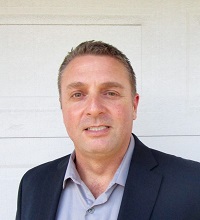Putting Your Assets to Work
Business owners seeking sustainable growth should think twice the next time they want to hire more employees or purchase additional vehicles to meet increased demands. Committing to an increase in fixed expenses may seem essential when business is booming, but what happens when revenue is flat due to increased competition and fluctuating consumer demand?
Passing up new business isn’t likely to happen when businesses are looking to grow. Fortunately, new technology can help mobile workforces become smarter about how they utilize their assets, giving them visibility into the use of these assets at all times. This helps enable business owners to take on more work while avoiding the financial risk of acquiring more employees or equipment.
Most businesses have untapped potential that can be converted into additional revenue, they just don’t know where the potential is and how to tap into it. That’s where mobile resource management software comes in – it monitors each of a business’s assets (vehicles, equipment and employees) and allows the fleet owner to see what’s being used where and when.
Using the data supplied by GPS tracking hardware fitted to the vehicle (or equipment), mobile resource management software can show you reports on a range of productivity metrics. Information that can be reported on includes:
- When vehicles arrive at (or leave) a worksite
- When equipment is being used, identifying when an engine is on
- Which assets have been sitting idle
- Vehicle travel time to determine time spent between jobs
But mobile resource management can extend beyond just knowing when and where assets are being used. It can help you determine if the assets are being used effectively. For example, assets are often used in a way that reduces a business’s capacity to take on new business efficiently and maximize profit when:
- Vehicles or equipment are used wastefully (e.g., empty loads, unsuitable vehicle dispatched, etc.)
- Vehicles are used on unsanctioned trips or side jobs
- Vehicles are driven unnecessary miles
- Assets are handled poorly which can increase the chance of breakdown, maintenance costs or reduce lifespan
Additionally, mobile resource management software can help address these issues and also help improve the capacity of a mobile workforce by:
- Reviewing your current inventory– are there assets not being used? Could they be sold or repurposed? Used for other jobs?
- Reviewing current routes– could vehicles be taking more efficient routes, avoiding traffic or working jobs closer to the yard?
- Reviewing vehicle/equipment usage – Are vehicles being driven in a responsible way? Is equipment being used outside a manufacturer’s recommended operating guidelines? Does the asset need servicing to maintain optimum capacity?
- Checking if jobs are being sequenced efficiently – Could customer jobs be reorganized to be more convenient for sales reps or delivery drivers? Could time be saved by reordering them?
- Verifying if trucks or vans are utilizing their load capacity effectively – Is there extra load space that isn’t being used?
- Planning for seasonal fluctuations – Can preparation be done to plan for the busy times, while not being over-resourced for the quiet months?
The key to improving asset utilization is knowledge – knowing what’s being used, who’s using it and how it’s being used, every minute of the working day. Mobile resource management provides that information in near real time so business owners can make the best use of their assets before buying more trucks or hiring additional staff.
More about Connecting Assets: 5 Things to Keep in Mind
 This article was written by Chris Ransom. He leads the Solutions Engineer team for Solutions Engineer for Verizon Connect. He has an expertise in strategy, partnerships, product management, program management and operations. He received his BA from the University of California, Los Angeles and his MBA from San Diego State University.
This article was written by Chris Ransom. He leads the Solutions Engineer team for Solutions Engineer for Verizon Connect. He has an expertise in strategy, partnerships, product management, program management and operations. He received his BA from the University of California, Los Angeles and his MBA from San Diego State University.



